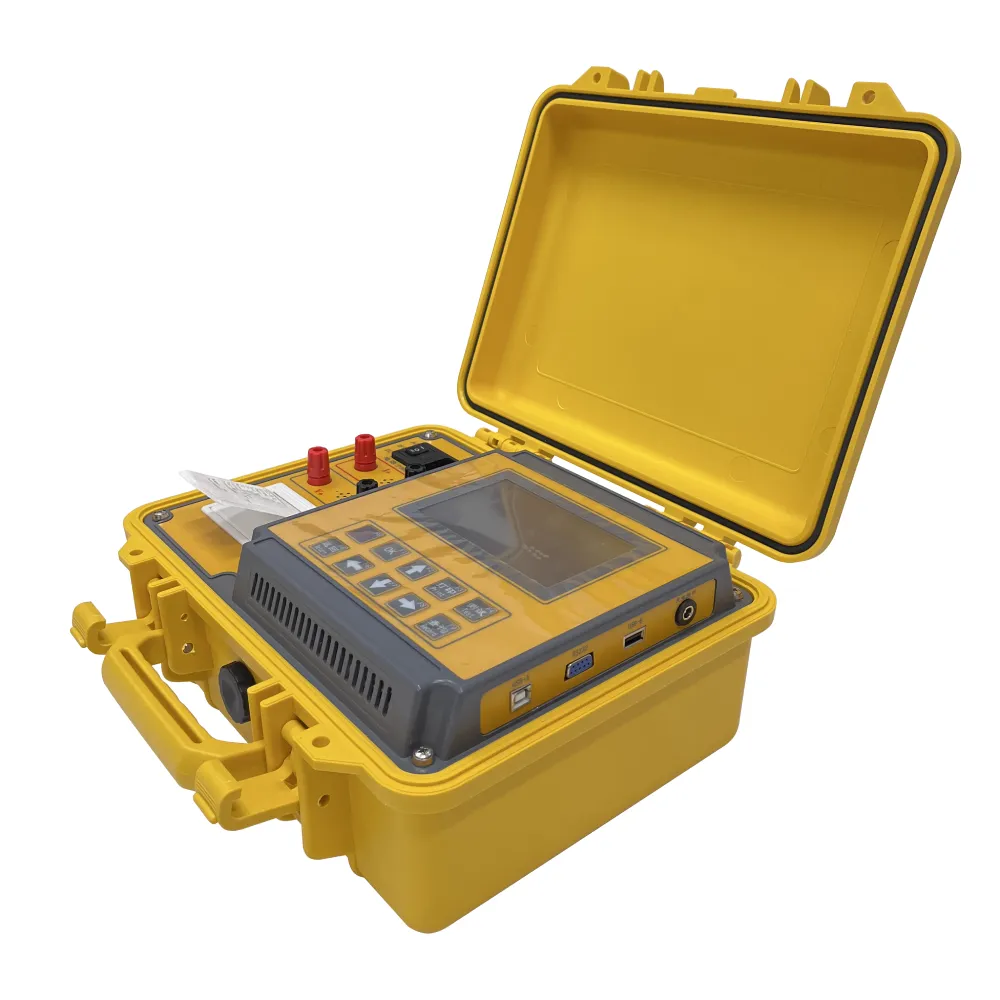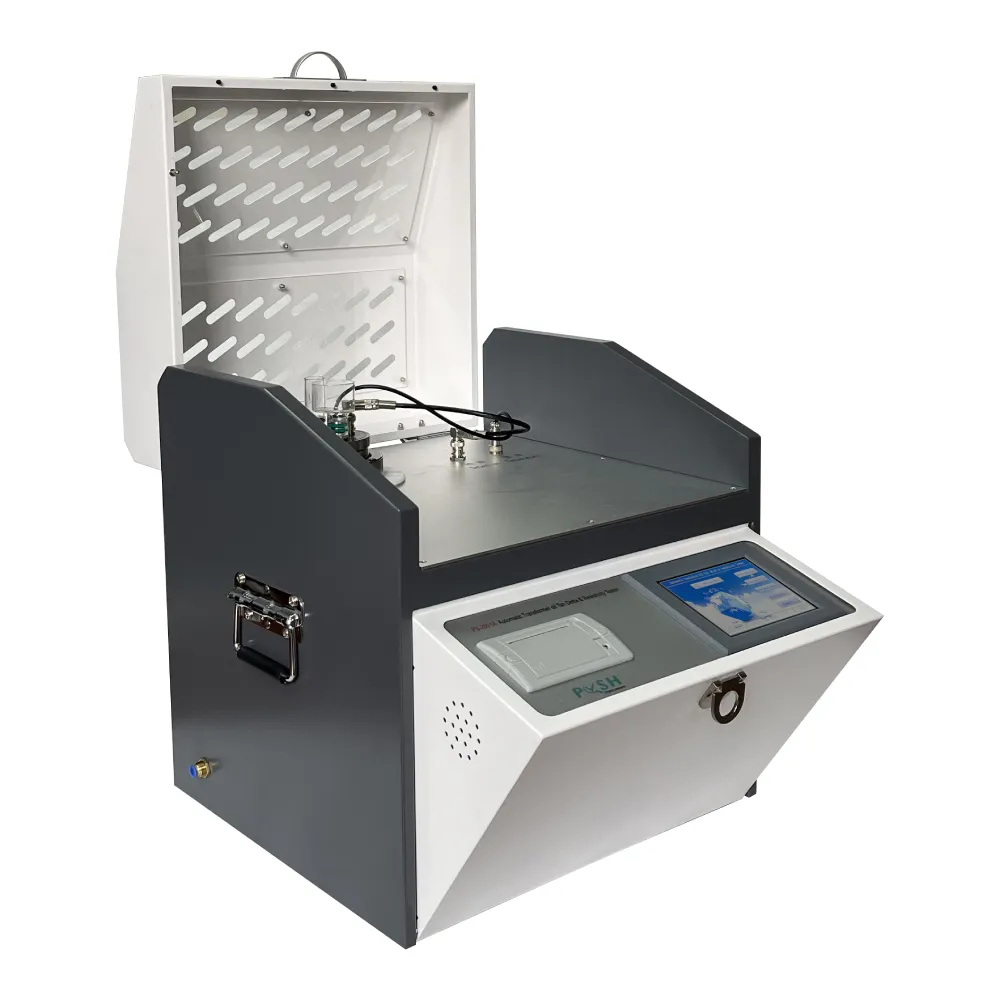TEL:
+86-0312-3189593
 English
English

Telephone:0312-3189593

Email:sales@oil-tester.com
2 月 . 15, 2025 13:41
Back to list
transformer how to check
The transformer is an integral component of many electrical systems, ensuring efficient energy transfer between circuits. Whether you’re maintaining them in an industrial facility or using them in consumer electronics, understanding how to check these transformers is crucial. Drawing from practical experience and industry expertise, this article explores effective methods to test transformers, ensuring accuracy and safety.
Temperature Monitoring Transformers can generate significant heat. Employ temperature sensors to continuously monitor temperature against specified limits. Excessive heat may indicate overloading or failing components. A thermal imaging camera provides a comprehensive view of heat distribution across the transformer surface, highlighting potential hot spots. Oscilloscope for Advanced Diagnostics For more sophisticated analysis, a digital oscilloscope is invaluable. It assists in visualizing the waveform output of the transformer, identifying anomalies like waveform distortion or harmonic issues which could impair performance. Factors Influencing Transformer Condition Understanding environmental and operational conditions is crucial. Factors like humidity, load variations, and vibration significantly affect transformer longevity and function. Regular environmental assessments aid in preemptively addressing potential issues. Maintenance and Safety Protocols Regular maintenance and adherence to safety protocols cannot be overstated. Establish a routine check schedule based on transformer usage and environmental conditions. Ensure personnel are adequately trained in handling high-voltage equipment and emergency procedures. Documenting and Analyzing Test Results Maintain records of all test results. Detailed logs aid in tracking transformer performance over time, enabling trend analysis and early detection of potential failures. Documenting data provides a baseline for future troubleshooting and facilitates predictive maintenance strategies. Choosing Expertise and Consultations While regular checks can be conducted in-house, partnering with professional services for comprehensive assessments is advisable. Specialists bring an additional layer of expertise, utilizing advanced diagnostic equipment and methodologies inaccessible to general operational staff. In summary, checking transformer conditions demands a blend of technical knowledge, suitable tools, and ongoing vigilance. By integrating these practices into your regular maintenance routines, ensure the optimal performance and longevity of your transformers. Your commitment to precision and safety not only safeguards equipment but also enhances operational reliability.


Temperature Monitoring Transformers can generate significant heat. Employ temperature sensors to continuously monitor temperature against specified limits. Excessive heat may indicate overloading or failing components. A thermal imaging camera provides a comprehensive view of heat distribution across the transformer surface, highlighting potential hot spots. Oscilloscope for Advanced Diagnostics For more sophisticated analysis, a digital oscilloscope is invaluable. It assists in visualizing the waveform output of the transformer, identifying anomalies like waveform distortion or harmonic issues which could impair performance. Factors Influencing Transformer Condition Understanding environmental and operational conditions is crucial. Factors like humidity, load variations, and vibration significantly affect transformer longevity and function. Regular environmental assessments aid in preemptively addressing potential issues. Maintenance and Safety Protocols Regular maintenance and adherence to safety protocols cannot be overstated. Establish a routine check schedule based on transformer usage and environmental conditions. Ensure personnel are adequately trained in handling high-voltage equipment and emergency procedures. Documenting and Analyzing Test Results Maintain records of all test results. Detailed logs aid in tracking transformer performance over time, enabling trend analysis and early detection of potential failures. Documenting data provides a baseline for future troubleshooting and facilitates predictive maintenance strategies. Choosing Expertise and Consultations While regular checks can be conducted in-house, partnering with professional services for comprehensive assessments is advisable. Specialists bring an additional layer of expertise, utilizing advanced diagnostic equipment and methodologies inaccessible to general operational staff. In summary, checking transformer conditions demands a blend of technical knowledge, suitable tools, and ongoing vigilance. By integrating these practices into your regular maintenance routines, ensure the optimal performance and longevity of your transformers. Your commitment to precision and safety not only safeguards equipment but also enhances operational reliability.
Previous:
Next:
Latest news
-
Differences between open cup flash point tester and closed cup flash point testerNewsOct.31,2024
-
The Reliable Load Tap ChangerNewsOct.23,2024
-
The Essential Guide to Hipot TestersNewsOct.23,2024
-
The Digital Insulation TesterNewsOct.23,2024
-
The Best Earth Loop Impedance Tester for SaleNewsOct.23,2024
-
Tan Delta Tester--The Essential Tool for Electrical Insulation TestingNewsOct.23,2024





